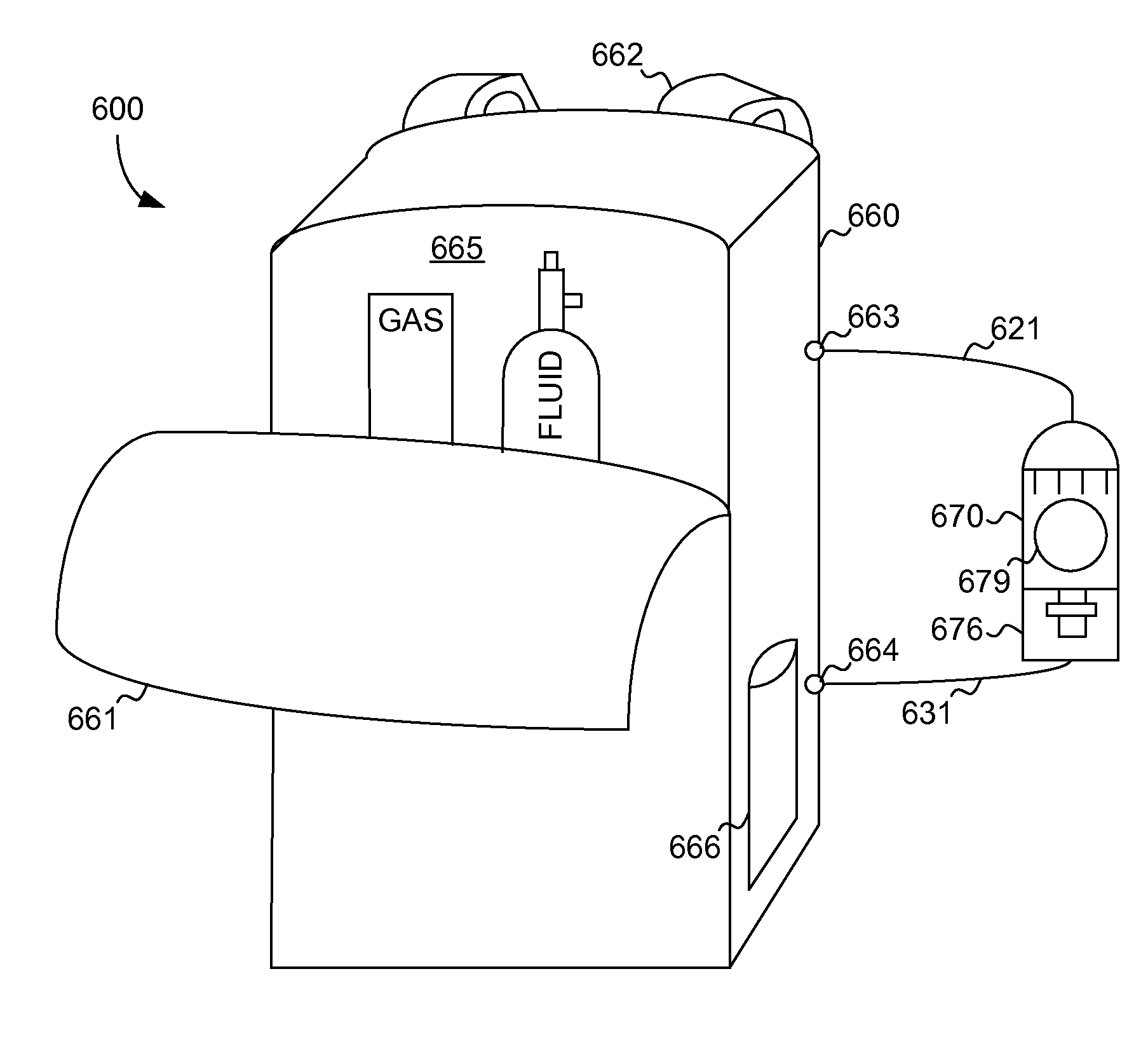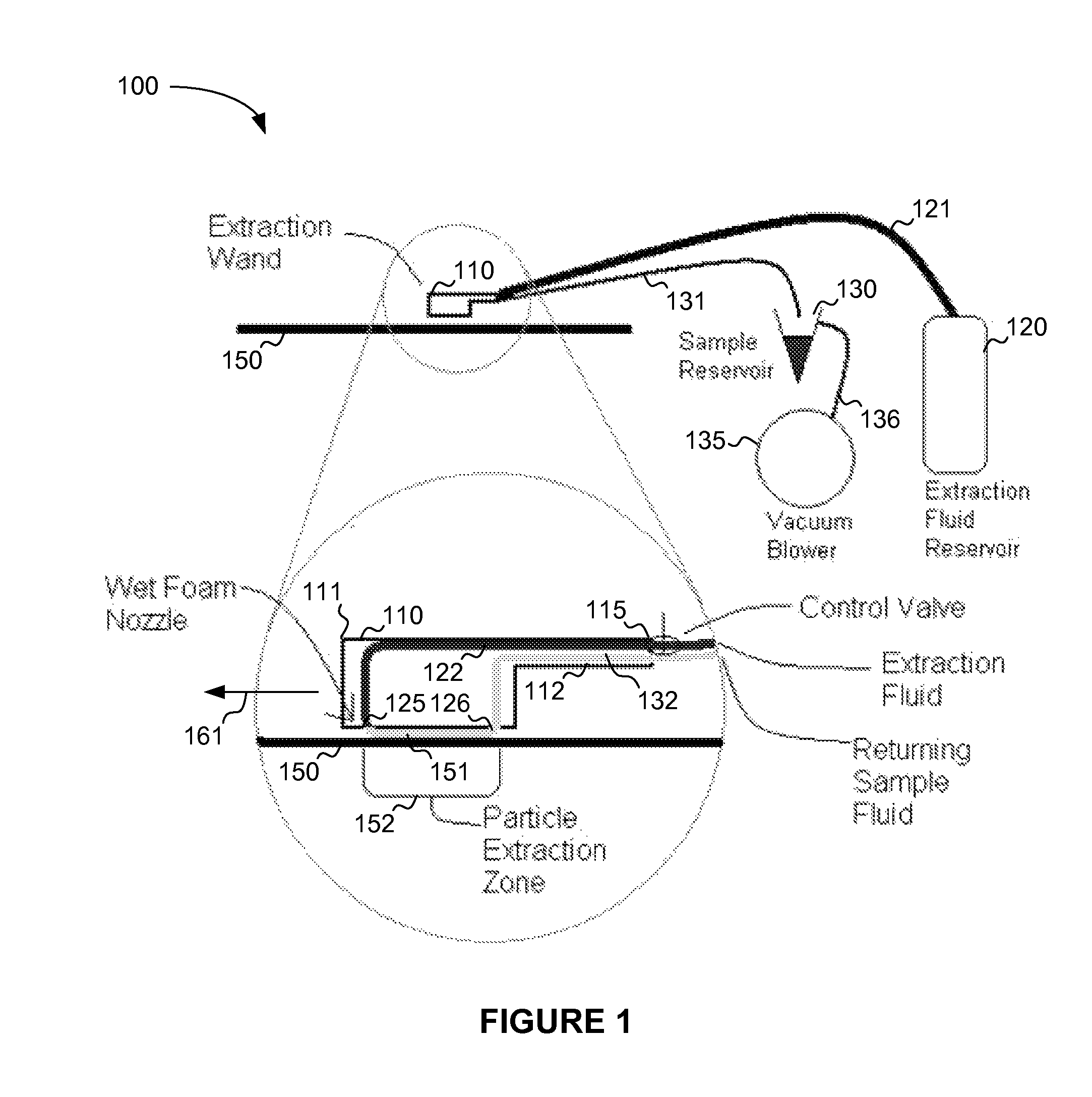Surface sampler for bioterrorism particle detection
a surface sampler and bioterrorism technology, applied in the field of surface samplers, can solve the problems of limited surface sample, low removal efficiency of certain surfaces, and not without their problems and limitations
- Summary
- Abstract
- Description
- Claims
- Application Information
AI Technical Summary
Benefits of technology
Problems solved by technology
Method used
Image
Examples
Embodiment Construction
[0027]The present invention provides novel devices, systems and methods for collecting and measuring surface samples to combat possible bioterrorism in an efficient and effective manner. The present invention provides many advantages over conventional systems including, but not limited to, allowing the capture of surface particles with high sampling efficiency resulting in high concentrations in a relatively low volume of liquid.
[0028]The present invention uses a collection fluid previously developed by the inventors, and described in co-pending and co-owned U.S. Published Patent Application Serial Number US 2009 / 0101575, described herein and throughout this disclosure as “wet foam” and which application is incorporated by reference herein into this disclosure in its entirety. This novel collection fluid (“wet foam”) is created by dissolving a compressed gas in a chemically buffered fluid containing a foaming agent and subjecting the fluid to a pressure drop. Further details of the ...
PUM
| Property | Measurement | Unit |
|---|---|---|
| pressure | aaaaa | aaaaa |
| pressure | aaaaa | aaaaa |
| pressures | aaaaa | aaaaa |
Abstract
Description
Claims
Application Information
 Login to View More
Login to View More - R&D
- Intellectual Property
- Life Sciences
- Materials
- Tech Scout
- Unparalleled Data Quality
- Higher Quality Content
- 60% Fewer Hallucinations
Browse by: Latest US Patents, China's latest patents, Technical Efficacy Thesaurus, Application Domain, Technology Topic, Popular Technical Reports.
© 2025 PatSnap. All rights reserved.Legal|Privacy policy|Modern Slavery Act Transparency Statement|Sitemap|About US| Contact US: help@patsnap.com



